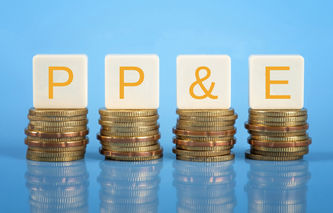Definition
The term involuntary conversion refers to the unscheduled termination of property, plant, and equipment's service as the result of an unwanted event such as a fire, flood, or even theft. When the involuntary conversion of assets occurs, the company must compare the assets' original purchase price and accumulated depreciation to the disposition price to determine if there was a gain or loss on the conversion.
Explanation
One of the ways a company can dispose of assets is through an involuntary conversion, which can occur as a results of an unwanted event such as a fire, flood, or even theft. Companies can also dispose of assets through their voluntary sale or exchange.
When a company disposes of an asset, it must calculate the depreciation occurring between the last journal entry date and the date of retirement. The net book value is then determined by subtracting the total accumulated depreciation from the asset's historical cost. Net book value is then compared to the disposition price of the asset to determine if there was a gain or loss on the transaction. If the event involves a casualty loss, the net proceeds from insurance policies should be included in the calculation of a gain or loss.
Involuntary conversions oftentimes occur as the result of events such as a fire, flood or even theft. If such an event is both unusual and occurs infrequently, the gain or loss would be categorized as an extraordinary item and appear as such on the company's income statement.
Example
A specialty vehicle owned by Company A could not be repaired after being caught in a flash flood. Company A purchased the vehicle for $100,000 two years ago. When purchased, the vehicle was thought to have a serviceable life of five years. The annual depreciation on the asset was calculated to be:
= $100,000 / 5, or $20,000 per year
After two years, the accumulated depreciation would be:
= $20,000 x 2, or $40,000
Company A carried insurance on the vehicle and was paid $85,000 as part of the loss settlement. The gain or loss on the disposition of the vehicle would be calculated as:
Cost of Machinery | $100,000 |
Less: Accumulated Depreciation | $40,000 |
Net Book Value | $60,000 |
Proceeds from Insurance Policy | $85,000 |
Gain from Disposition of Vehicle | $25,000 |
The following journal entries are needed to remove the asset from the company's books:
Debit | Credit | |
Cash | $85,000 | |
Accumulated Depreciation | $60,000 | |
Gain on Disposal | $25,000 |



